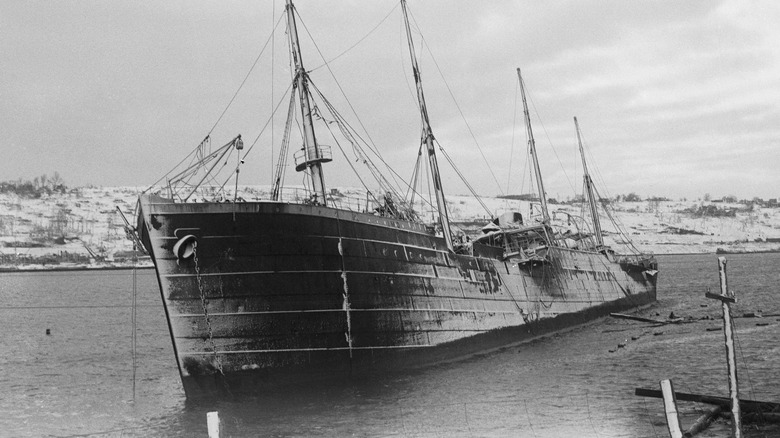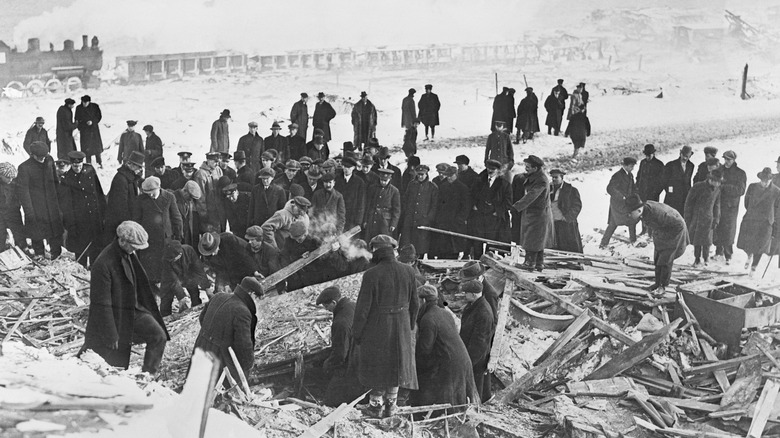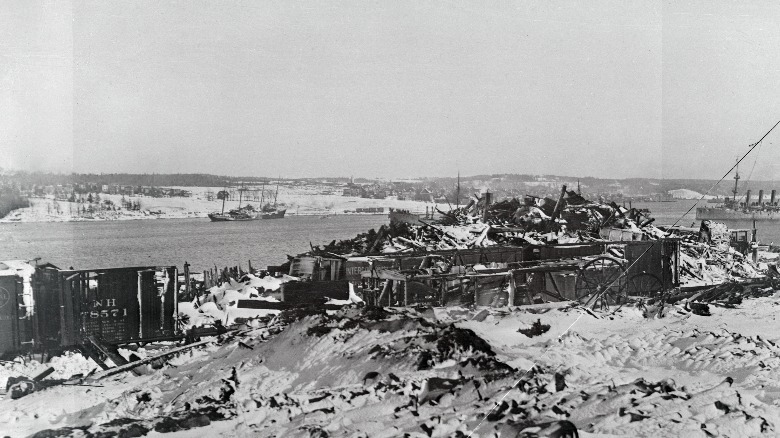The Great Halifax Explosion: The Military Ship Wreck That Changed Canada Forever
Since the 1940s, nuclear weapons have obviously claimed the title for largest manmade explosions. Splitting an atom and harnessing the power of the sun tends to help in ensuring that an explosion is as big as possible. However, before J. Robert Oppenheimer and the Manhattan Project were even ideas, the previous superlative for the largest explosion belonged to what started as an accident in the harbor of Halifax, Nova Scotia, in Canada on December 6, 1917. Two ships, the SS Mont-Blanc and SS Imo, collided and the eruption resulted in the death of 1,963 people.
According to the Government of Canada, both the SS Mont-Blanc and the SS Imo were involved in the ongoing war effort to transport supplies to the front lines of World War I. As such, all manner of dangerous cargo was leaving Halifax, including the French Mont-Blanc's cargo of TNT and other explosives. As both the Norwegian SS Imo and SS Mont-Blanc left the harbor that morning, the ships collided. A fire soon broke out, but no one save for a few professionals and naval officers in the harbor were too alarmed. People even arrived to spectate the firefighters doing their best to snuff out the flames.
An outpouring of relief efforts
Despite the valor of the firefighters, the SS Mont-Blanc's cargo ignited, and a 2.9 kiloton (2,900 tons of TNT) explosion ripped through the harbor. For perspective, 2.9 kilotons are about 20 percent of the yield of the atomic bomb dropped on Hiroshima in 1945. The former SS Mont-Blanc was vaporized and the explosive force was so powerful that it caused a tsunami in Halifax, wiping out homes (and their inhabitants) in the process, rendering 6,000 people homeless. All told, there were 9,000 injuries in addition to the aforementioned nearly 2,000 deaths.
Fortunately, the city of Boston came to the rescue and sent scores of doctors and medical personnel over the border into Canada to help in any way they could. Additionally, the lifesaving procedures performed by all doctors on the scene led to strides in medical science, especially in the fields of eye care and pediatrics. Once the dust had literally settled, victims were nearly immediately tended to. Importantly, due to the prevalence of eye injuries and subsequent blindness from wood, glass, and other shrapnel, the Canadian National Institute for the Blind was founded shortly afterward in 1918.


